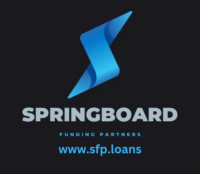Purchase Order Financing
With PO financing, a lender will pay your third-party supplier up to 100% of the costs required to produce and deliver the agreed-upon goods to your customer.
Once your customer receives the goods, you invoice them for the fulfilled order, and they pay the purchase order financing company directly.
Then, the PO financing company deducts its fees and pays you the rest.
Purchase order financing takes place before you’ve delivered goods to a customer and before you’ve sent them an invoice for an order.
How does purchase order financing work?
With traditional small-business loans, only two parties are involved: you, and the lender issuing the funding. When you enter into a purchase order financing agreement, however, you’ll typically work with the following parties throughout the process.
Your comapny/The borrower
You, who is seeking financing to fulfill a purchase order for your business.
Purchase order financing company
The company offering the financing. This company verifies your purchase order and provides funds to the supplier.
Supplier
The third party that supplies or manufactures the goods that you resell or distribute. The supplier receives payment for its goods from the purchase order financing company directly.
Customer
Your customer, the party trying to buy the goods. In a purchase order financing arrangement, after your customer has received their goods, they typically pay the financing company directly.
Here’s a breakdown of purchase order financing:
- You receive a purchase order. Your business receives a large order from a customer, but you don’t think you have the inventory or cash on hand to fulfill it.
- You determine the costs. You reach out to your supplier to determine how much it will cost to complete the order. Based on the cost assessment your supplier provides, you can confirm whether you’ll need to apply for financing to fulfill the order.
- You apply for purchase order financing. After you’ve decided that you need PO funding, you’ll want to find the right purchase order financing company, submit an application and, hopefully, receive approval. You should submit the purchase order and the supplier’s cost estimate as part of your application. The financing company may approve you for up to 100% of the supplier’s costs, depending on your business’s qualifications, the supplier’s track record and reputation, and the customer’s creditworthiness. It’s important to note that if the financing company approves you for only a percentage of funding — say, 90% of the supplier’s costs — you’ll be responsible for covering the remaining 10% on your own.
- The purchase order financing company pays the supplier. Once you’ve been approved, the purchase order financing company will pay your supplier to manufacture and deliver the goods that are needed to fulfill the customer’s purchase order. Many financing companies will pay suppliers using a letter of credit — an official bank guarantee that payment will be made once certain conditions are met — in this case, once the goods have been shipped and proof of shipment has been provided.
The supplier delivers the goods to the customer. The supplier ships the goods directly to the customer. Once the customer receives the goods, the order is complete.
You invoice the customer. After the customer receives the goods, you send them an invoice for the order. You also send the invoice to the purchase order financing company
The customer pays the purchase order financing company. The customer pays the financing company directly for the full price of the invoice.
The financing company deducts its fees and transfers your funds. After receiving payment from the customer, the purchase order financing company deducts its fees and pays you the remaining balance from the proceeds.
How much does purchase order financing cost?
Purchase order financing fees typically range from 1% to 3% per month and are usually priced on a per-30-day period. These fees are charged on the total of the supplier’s costs, but generally increase the longer it takes your customer to pay their invoice. Say, for example, you have a purchase order financing agreement in which the supplier is paid $100,000. The financing company charges a fee of 2% per 30 days. If it takes your customer 30 days to pay their invoice, your total fees are 2% of $100,000, or $2,000. If it takes your customer 60 days to pay their invoice, on the other hand, your total fees equal 4% of $100,000, or $4,000. Some purchase order financing companies may also use a rate structure in which you receive a set fee for the first 30 days and then a lower rate for a specified number of days until your customer pays.
For instance, a company may charge 3% per 30 days and then 1% per 10 days thereafter, or 3% per 30 days and then 0.1% per day thereafter.
The purchase order financing fees that you receive will ultimately depend on factors such as your business’s qualifications, your customer’s creditworthiness and the reputation of your supplier.
Advantages
- Allows you to take on customer orders you couldn’t otherwise fulfill. Purchase order financing can be a good option for seasonal businesses, or those that are growing quickly and need extra capital to fulfill large orders from customers. Similarly, this type of financing can be worthwhile for businesses that are experiencing a cash flow shortage and could benefit from an order that would generate significant revenue.
- Can be easier to qualify for than other types of business financing. Many purchase order financing companies focus on the creditworthiness of your customers and the reputation of your suppliers first and foremost when evaluating your business’s application for funding. Although these companies will still consider traditional business loan requirements like your business’s financials and credit history, it may be easier for startups and businesses with bad credit to qualify compared with other types of business funding.
- Doesn’t require budgeting monthly or weekly loan payments. Although you’re borrowing money, purchase order financing isn’t technically a loan, so you don’t have to worry about paying back funds in monthly or weekly installments — like you would with a business term loan.
Disadvantages
- Can be expensive. Purchase order financing fees may seem competitive at first glance — typically ranging from 1% to 3% of the total supplier’s costs per month.
- Reliance on customers. The amount you pay in fees is based on how long it takes your customer to pay their invoice, meaning it’s difficult to estimate the total cost of purchase order financing upfront. Plus, to access PO financing, you must rely on your customer’s creditworthiness (on top of other factors) in order to qualify
- Loss of control. With purchase order financing, the company you work with manages a significant amount of the process — including paying your supplier and collecting payment from your customer. Your supplier also ships goods directly to your customer, meaning you don’t have your hands in that part of the process, either. Although this may save your business time, it might also mean processes are not handled in the way you prefer, which could potentially risk relationships with your suppliers or customers.

